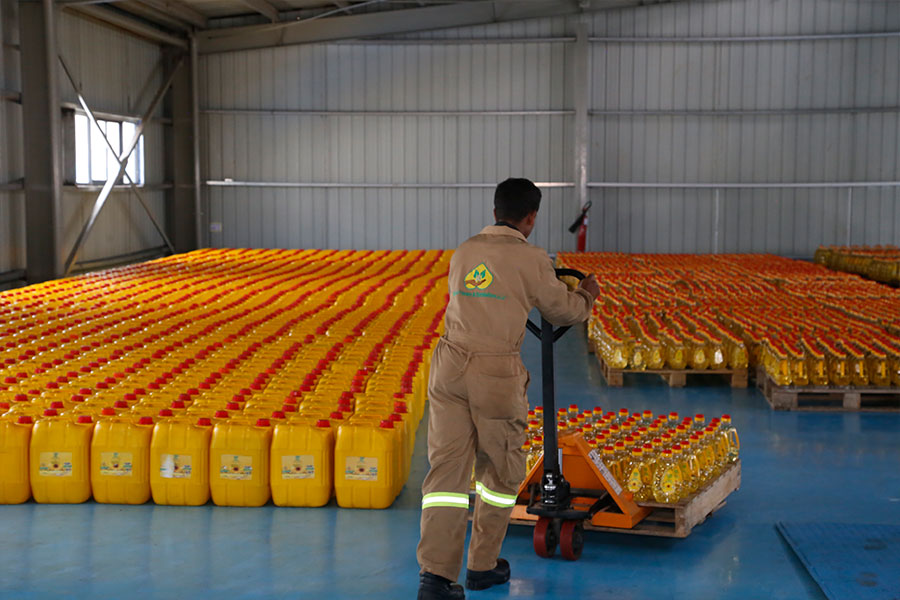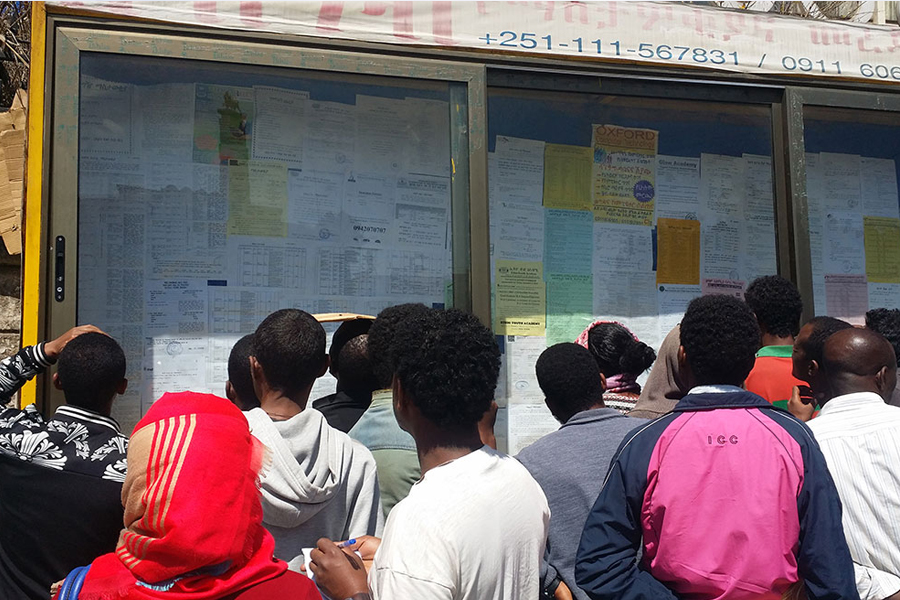
May 28 , 2022
By Agnes Kalibata
The last food crisis has shown that there is nothing to fear in food crisis. What should be a worry is the lack of action once the problem has been understood, writes Agnes Kalibata, president of the Alliance for a Green Revolution in Africa (AGRA).
The food price crisis of 2007-2008, COVID-19, the Russia-Ukraine War, and climate change have exposed the fragility of food systems. The greatest risk lies in refusing to learn from lessons of the past.
At the start of 2022, we were already facing the prospect of a food crisis. Even before the first Russian tank rolled across Ukraine’s borders on 24 February, food prices had tipped record highs as the world struggled to recover from COVID-19 to repair disrupted supply chains and soaring fuel and gas prices. But a conflict involving two of the world’s largest wheat exporters, and major producers of fertiliser, maize and vegetable oil, have inevitably driven prices even higher and, once again, pushed the issue of global food security into sharp focus.
Russia and Ukraine together account for roughly 30pc of the world’s wheat and barley exports, a fifth of its corn trade and almost 80pc of sunflower oil exports. Most of their wheat production is imported by countries in the Middle East and Africa, with some 50 countries depending on Russia and Ukraine. Warfare, port blockades and international sanctions have reduced these exports, and supply uncertainties have already pushed wheat prices to around 11 dollars a bushel, a level last seen in 2008. The FAO food price index soared last week to a record high.
The situation is further compounded by rising energy prices, and disruptions to the supply of fertilisers, the prices of which are already fluctuating at levels unseen since the global financial crisis because of higher gas prices. Russia and Belarus produce more than a third of global potash. Russia is also the world’s biggest exporter of fertilisers and the war with Ukraine has disrupted the export of fertilisers and driven up prices for natural gas, which is an important ingredient of nitrogen-based fertilisers. Fertiliser prices (DAP) are surging towards 1000 dollars a tonne, with a significant increase in the last six months, and a 40pc jump since the invasion. This will hurt rich and poor farmers alike, due to the clear link between rising costs and reduced production.
The US-based Center for Global Development estimates that higher food and fuel prices will push 40 million more people into extreme poverty. Lower income households, who were already spending between 60pc and 80pc of their earnings on food, face stark choices, including how many meals to eat in a day. In Tunisia, the fear of food shortages combined with the imminent arrival of Ramadan, caused panic buying and emptied supermarket shelves. Kenyans are protesting rising food prices on social media with the hashtag #lowerfoodprices. Thousands of maize farmers in Ethiopia have been protesting soaring fertiliser prices. And let us not forget that it was rising food prices that led to the 2019 Sudan coup and the Arab Spring rebellion of 2008.
The food crisis of 2007-8 suggests important lessons for us to mitigate a food crisis this year.
Primarily, remember that cooperation between countries matters, sending important signals to markets that governments and the private sector take the problem seriously. Then, take concerted action to trade more, easier, faster. Allow food to be traded and attack non-tariff barriers that are the most serious limitations to trade. Africa has shown leadership in the creation of the African Continental Free Trade Area (AfCFTA) – these principles must be fast tracked to allow as friction-free trading system as possible.
Third, governments and development partners should urgently plan for the social and humanitarian consequences of a food crisis. Social safety nets should be strengthened at least temporarily, and humanitarian aid planned for the most vulnerable.
Last and perhaps most importantly, governments and partners must go back to basics: that African economies and livelihoods are built on agriculture. More than 70pc of the population is involved in farming, but the vast majority of these are smallholdings with significant exposure to environmental and economic shocks. These farmers and their contributions can be transformed by shorter value chains that share some of the value with farmers, a digital revolution that puts farmers, and strong government agenda and support.
African farmers, if given the opportunities that their European, Asian and North American counterparts have, can increase massively their productivity and grow their businesses. An emergency plan to build support for farmers now can send important signals to markets and increase production this year. Give farmers access to productive, climate smart seeds, the knowledge they need to become more productive, and innovative financial tools to invest. Then help them get their products to market. Proven models are already used by many partners – millions of farmers can be lifted quickly in this way.
At the same time, soaring fertiliser prices must be addressed with urgent action to increase efficiency. AGRA [of which the author is the president] has promoted technologies that can reduce cost to the farmer including the use of blended fertilisers, as we already see in Kenya, Uganda and Rwanda. The same is true in the use of micro-dosing. Both give much more ‘bang for the buck’ and can be much more environmentally friendly. This is also an opportunity to promote greater use of farmers’ traditional practices of regeneration and organic fertilization.
This is the time for African governments to give a strong signal of support to the agriculture sector. Start by reducing redundant regulation, and support SMEs and farmers’ cooperatives with credit guarantee programmes.
We learned from the last food crisis that we should not be afraid of a food crisis. What we should be worried about is lack of action once we understand the problem. Governments should lead and coordinate, private sector should target investment on proven solutions, and unlock African farmers’ potential.
PUBLISHED ON
May 28,2022 [ VOL
23 , NO
1152]


Fortune News | Jul 08,2023

Viewpoints | Jun 17,2023

Agenda | Jul 22,2023

Commentaries | Jan 26,2019

Fortune News | Aug 21,2021

My Opinion | 131656 Views | Aug 14,2021

My Opinion | 128020 Views | Aug 21,2021

My Opinion | 125983 Views | Sep 10,2021

My Opinion | 123607 Views | Aug 07,2021

Dec 22 , 2024 . By TIZITA SHEWAFERAW
Charged with transforming colossal state-owned enterprises into modern and competitiv...

Aug 18 , 2024 . By AKSAH ITALO
Although predictable Yonas Zerihun's job in the ride-hailing service is not immune to...

Jul 28 , 2024 . By TIZITA SHEWAFERAW
Unhabitual, perhaps too many, Samuel Gebreyohannes, 38, used to occasionally enjoy a couple of beers at breakfast. However, he recently swit...

Jul 13 , 2024 . By AKSAH ITALO
Investors who rely on tractors, trucks, and field vehicles for commuting, transporting commodities, and f...

Jun 28 , 2025
Meseret Damtie, the assertive auditor general, has never been shy about naming names...

Jun 21 , 2025
A well-worn adage says, “Budget is not destiny, but it is direction.” Examining t...

Jun 14 , 2025
Yet again, the Horn of Africa is bracing for trouble. A region already frayed by wars...

Jun 7 , 2025
Few promises shine brighter in Addis Abeba than the pledge of a roof for every family...

Jun 29 , 2025
Addis Abeba's first rains have coincided with a sweeping rise in private school tuition, prompting the city's education...

Jun 29 , 2025 . By BEZAWIT HULUAGER
Central Bank Governor Mamo Mihretu claimed a bold reconfiguration of monetary policy...

Jun 29 , 2025 . By BEZAWIT HULUAGER
The federal government is betting on a sweeping overhaul of the driver licensing regi...

Jun 29 , 2025 . By NAHOM AYELE
Gadaa Bank has listed 1.2 million shares on the Ethiopian Securities Exchange (ESX),...